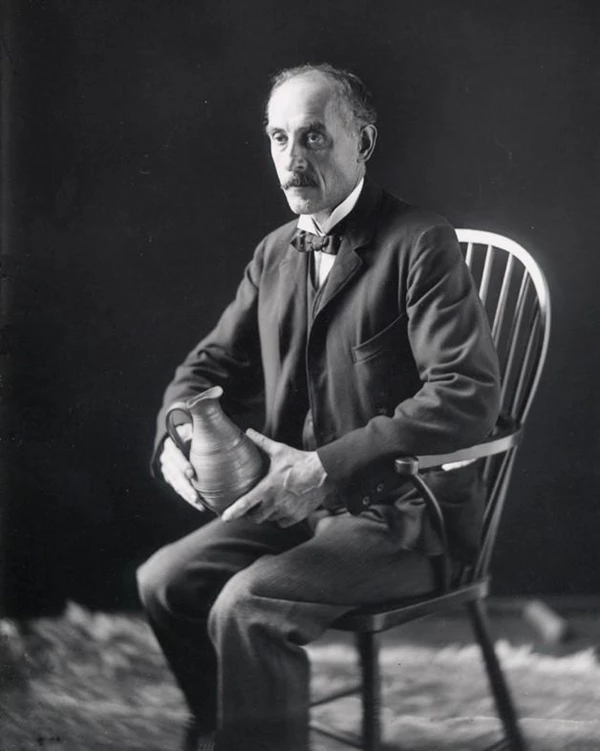Last updated: February 14, 2022
Person
Louis St. Gaudens

NPS Photo SAGA 2862
“I think all of us who worked with Louis felt there was lodged in him a knowledge of what was completely right, completely beautiful,” remembered fellow sculptor Frances Grimes. Louis St. Gaudens was a gifted sculptor who also often assisted his well-known brother, Augustus Saint-Gaudens.
Notable works by Louis St. Gaudens’ include two marble lions at the stairway of the Boston Public Library (1889-1890) and a figure of the Greek poet, Homer, in the Rotunda of the Library of Congress (1896). Every day, hundreds of travelers walk beneath his army of heroic figures in the interior and exterior of Union Station in Washington, DC (erected 1913). Beginning in 1905, he created three versions of Roman soldiers bearing shields representing the then-46 states. St. Gaudens also sculpted six allegorical figures for the transit hub near the United States Capitol: Fire, Electricity, Freedom, Inventive Imagination, Agriculture, and Mechanics.
The career and personal life of Louis St. Gaudens was deeply entwined with his elder brother. He began working with Augustus in cameo cutting in New York and later followed his brother to Rome where Augustus’ studio was located. St. Gaudens began courses at the French Academy and, like his brother, soon continued studies at the Ecoles de Beaux Art from 1879 to 1880. In the early days of their artistic careers, Louis St. Gaudens assisted Augustus in decorations for the Cornelius Vanderbilt II house (1881-1883) and the Admiral David Glasgow Farragut Memorial (1877-1880).
Unlike the elaborate operation of his brother’s studio, Louis St. Gaudens remained largely indifferent to the commercial pressures of gaining and completing his own commissions. “He felt no necessity to create what he was capable of imagining,” recounted Grimes. St. Gaudens found stability assisting his brother in New York and in Cornish, New Hampshire. He relied on his familial relations personally and professionally particularly through an ongoing struggle with alcoholism.
In 1898, Louis St. Gaudens married sculptor Annetta Johnson. The newlyweds then moved to her home in Ohio where they remained until Augustus called the couple to assist him in 1900. St. Gaudens arrived in Cornish ahead of his wife and infant son, Paul and the family rented a nearby home. In 1903, they purchased an eighteenth century Shaker meetinghouse in Enfield, New Hampshire and reconstructed the structure in Cornish.
While surrounded by his family and other fellow artists, those close to Louis St. Gaudens often noted his forlorn disposition and deep introversion. When walking the close distance to and from his brother’s estate, he often carried an umbrella which “added to the impression he gave of melancholy for it indicated a man who suspected that out of the clearest sky might come a shower,” according to Grimes. There was a “solitude which he could not leave,” she added. Louis died at his home in Cornish from pneumonia in 1913.
Note: Louis St. Gaudens chose to use the abbreviated version of “Saint” in his last name. His brother, Augustus, more often used “Saint-Gaudens” or “Saint Gaudens”.
